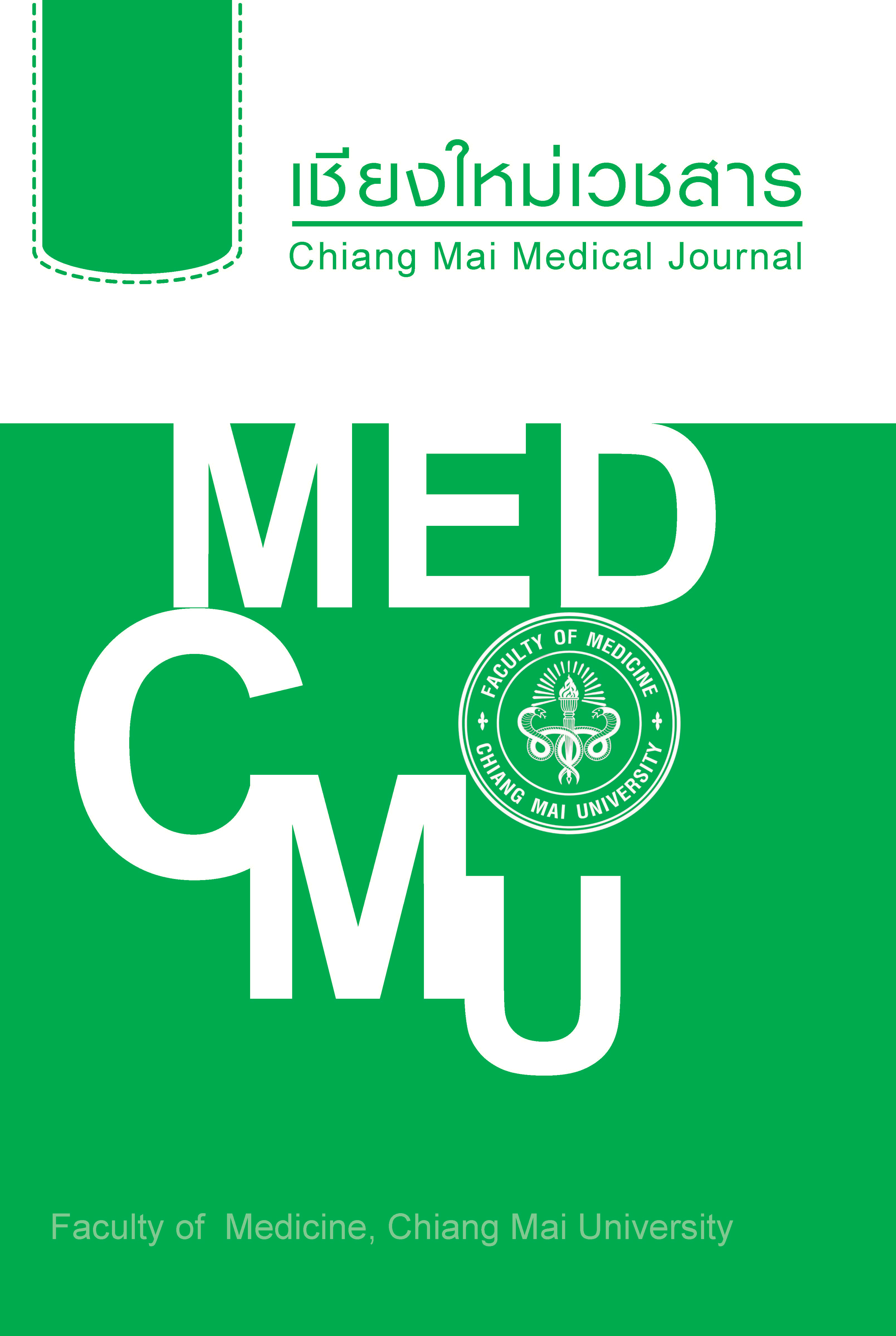Intraoperative intravenous dextrose administration and the incidence of nausea and vomiting after gynecologic laparoscopic surgery: a randomized double-blind controlled study
Keywords:
dextrose solution, normal saline solution, postoperative nausea and vomiting (PONV), laparoscopic gynecologic surgeryAbstract
Objective This study tested the hypothesis that administration of intravenous dextrose solution during gynecologic laparoscopic surgery would reduce the incidence and severity of postoperative nausea and vomiting (PONV) compared with an equal volume of normal saline solution
Methods A prospective randomized double blind controlled study was conducted. Eighty-six patients were randomized to receive either dextrose solution (n=42) or normal saline solution (n= 44). Bellville postoperative nausea and vomiting scores were recorded for the first 24 hours after surgery.
Results Fourteen of 44 patients (31.8%) in the normal saline solution group compared to 15 of 42 patients (35.7%) in the dextrose solution group developed postoperative nausea and vomiting (p =0.09). At each time point, the incidence and severity of PONV were similar. The patients in the dextrose solution group required more postoperative antiemetic medications (p =0.04). Blood glucose levels were significantly higher in the dextrose solution group during both the intraoperative and postoperative periods (p < 0.01).
Conclusions Intravenous dextrose administration does not reduce either the incidence or the severity of postoperative nausea and vomiting after laparoscopic gynecologic surgery but it does increase blood glucose level.
References
2. Apfel CC, Läärä E, Koivuranta M, Greim CA, Roewer N. A simplified risk scores for predicting postoperative nausea and vomiting: conclusions from cross-validations between two centers. Anesthesiology. 1999;91:693-700.
3. Koivuranta M, Läärä E, Snåre L, Alahuhta S. A survey of postoperative nausea and vomiting. Anaesthesia. 1997;52:443-9.
4. Gan TJ, Diemunsch P, Habib AS, Kovac A, Kranke P, Meyer TA, et al. Consensus guidelines for the management of postoperative nausea and vomiting. Anesth Analg. 2014;118:85-113.
5. Turkistani A, Abdullah K, Manaa E, Delvi B, Khairy G, Abdulghani B, et al. Effect of fluid preloading on postoperative nausea and vomiting following laparoscopic cholecystectomy. Saudi J Anaesth. 2009;3:48-52.
6. Maharaj CH, Kallam SR, Malik A, Hassett P, Grady D, Laffey JG. Preoperative intravenous fluid therapy decreases postoperative nausea and pain in high risk patients. Anesth Analg. 2005;100:675-82.
7. Magner JJ, McCaul C, Carton E, Gardiner J, Buggy D. Effect of intraoperative intravenous crystalloid infusion on postoperative nausea and vomiting after gynaecological laparoscopy: comparison of 30 and 10 mL kg(-1). Br J Anaesth. 2004;93: 381-5.
8. Yogendran S, Asokumar B, Cheng DC, Chung F. A prospective randomized double-blinded study of the effect of intravenous fluid therapy on adverse outcomes on outpatient surgery. Anesth Analg. 1995;80:682–6.
9. http://www.foodinsight.org/Background on Carbohydrates Sugars (accessed 01/11/2016).
10. Raksakietisak M, Chinachoti T, Iamaroon A, Thabpenthai Y, Halilamien P, Siriratwarangkul S, et al. Oral rehydration with 10% carbohydrate drink for preventing postoperative nausea and vomiting (PONV) after low dose of spinal morphine. J Med Assoc Thai. 2014;97:530-5.
11. Dabu-Bondoc S, Vadivelu N, Shimono C, English A, Kosarussavadi B, Dai F,et al. Intravenous dextrose administration reduces postoperative antiemetic rescue treatment requirements and postanesthesia care unit length of stay. Anesth Analg. 2012;117:591-6.
12. Patel P, Meineke MN, Rasmussen T, Anderson DL, Brown J, Siddighi S, et al. The relationship of intravenous dextrose administration during emergence from anesthesia to postoperative nausea and vomiting: a randomized controlled trial. Anesth Analg. 2013;117:34-42.
13. Bisgaard T, Kristiansen VB, Hjortsø NC, Jacobsen LS, Rosenberg J, Kehlet H. Randomized clinical trial comparing an oral carbohydrate beverage with placebo before laparoscopic cholecystectomy. Br J Surg. 2004;91:151-8.
14. Kenneth K. Becker. Principles and Practice of Endocrinology and Metabolism. 3rd ed. Lippincott Williams and Wilkins, 2001, p. 957
15. Griffenhagen GB, Hawkins LL. Facts and Comparisons: Handbook of Nonprescription Drugs. 6th ed. Washington, DC: American Pharmacists Association, 1989. p. 107
16. Hausel J, Nygren J, Thorell A, Lagerkranser M, Ljungqvist O. Randomized clinical trial of the effects of oral preoperative carbohydrates on postoperative nausea and vomiting after laparoscopic cholecystectomy. Br J Surg. 2005;92:415-21.
17. http://www.foodinsight.org/Background on Carbohydrates Sugars (accessed 01/11/2016).
18. McCaul C, Moran C, O’Cronin D, Naughton F, Geary M, Carton E, et al. Intravenous fluid loading with or without supplementary dextrose does not prevent nausea, vomiting and pain after laparoscopy. Can J Anesth. 2003;50:440-4.
19. Dagher CF, Abboud B, Richa F, Abouzeid H, El-Khoury C, Doumit C, et al. Effect of intravenous crystalloid infusion on postoperative nausea and vomiting after thyroidectomy: a prospective, randomized, controlled study. Eur J Anaesthesiol. 2009;26:188-91.
20. Chappell D, Jacob M, Hofmann-Kiefer K, Conzen P, Rehm M.A rational approach to perioperative fluid management. Anesthesiology. 2008;109: 723-40.
21. Elgueta MF, Echevarría GC, De la Fuente N, Cabrera F, Valderrama A, Cabezón R, et al. Effect of intravenous fluid therapy on postoperative vomiting in children undergoing tonsillectomy. Br J Anaesth. 2013;110:607-14.
22. Chaudhary S, Sethi AK, Motiani P, Adatia C. Pre-operative intravenous fluid therapy with crystalloids or colloids on post-operative nausea & vomiting. Indian J Med Res. 2008;127:577-81.
23. Apfel CC, Korttila K, Abdalla M, Kerger H, Turan A, Vedder I, et al. A factorial trial of six interventions for the prevention of postoperative nausea and vomiting. N Engl J Med. 2004;350:2441-51.
24. Hebbard GS, Sun WM, Dent J, Horowitz M. Hyperglycaemia affects proximal gastric motor and sensory function in normal subjects. Eur J Gastroenterol Hepatol. 1996;8:211-7.
25. Tseng LH, Liou SC, Chang TC, Tsai SC, Soong YK, Wong SY. A randomized blinded study of the incidence of postoperative nausea and vomiting in women after major gynecologic laparoscopic surgery. J Minim Invasive Gynecol. 2006;13:413-7.
26. Gan TJ: Risk factors for postoperative nausea and vomiting. Anesth Analg. 2006;102:1884-98.
27. Kissin I, Bright CA, Bradley EL Jr. Acute tolerance to continuously infused alfentanil: the role of cholecystokinin and N-methyl-D-aspartate-nitric oxide systems. Anesth Analg. 2000;91:110-6.
28. Hasegawa H, Shirohara H, Okabayashi Y, Nakamura T, Fujii M, Koide M, et al. Oral glucose ingestion stimulates cholecystokinin release in normal subjects and patients with non-insulin-dependent diabetes mellitus. Metabolism. 1996;45:196-202.
Downloads
Published
How to Cite
Issue
Section
License

This work is licensed under a Creative Commons Attribution-NonCommercial-NoDerivatives 4.0 International License.










